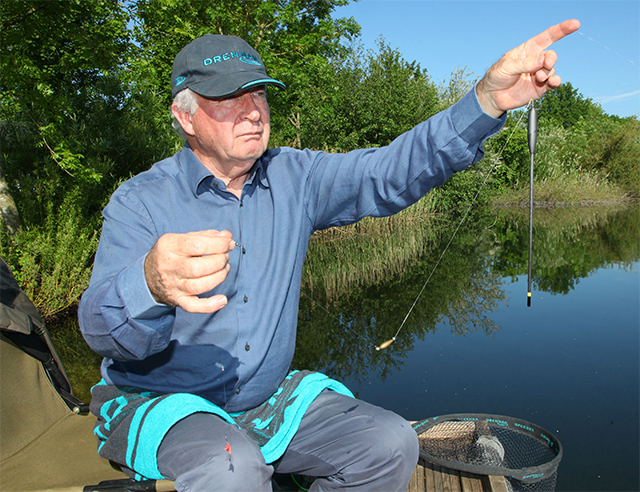Despite needing a large buoyant float, this technique is very sensitive, so you’ll be able to detect the most gentle of bites – often spotting more bites than you would if you were feeder fishing the same swim.

The main benefit to slider fishing is that it allows you to fish deep margins with great sensitivity and accuracy.
The key to slider fishing is to spend time at the beginning of the session plumbing the swim thoroughly, making sure you know what you are exactly fishing over. as you want to be fishing at dead depth to detect even the slightest of bites.
Setup wise, the float must be of a certain style and attached using a Swivel Float Attachment. A large bodied waggler like the Combo Missiles are perfect for slider fishing. Normal straight, crystal and insert wagglers aren’t ideal for this technique. The perfect float needs to have a large shot carrying capacity.
The ‘bulk’ shot needs to be positioned away from the float to ensure that it does not bang against the float on the cast/impact with the water.
Unlike traditional waggler fishing, the depth the float is fished at is dictated by a stop knot. By using a stop knot instead of float stops, this can be reeled in past the rod rings allowing you to fish at any set depth. The position of the stop knot above the float will depend upon the depth. This means that any depth of water can be tackled, even when your rod is shorter than the depth of water you are fishing.
For the stop knot, I like to use a length of Power Gum as this does not damage the line and can be easily removed after the session.
On the cast, when the rig hits the water, you must leave the bale arm open. This will mean the large float will rest on the surface for a second or two while the ‘bulk’ shot falls through the water, dragging line through the eye of the Swivel Float Attachment. The stop knot will then hit the Swivel Float Attachment‘s swivel and the float will sit up, before the dropper shots sink the float to the correct level, ready to detect a bite. Then the bale arm can be put back into place and you can carefully reel in any slack line in between the float and your rod tip.
This is a great method for targeting tench, bream and carp during the summer months and it is far more enjoyable and effective than using a feeder setup when fishing close in.
